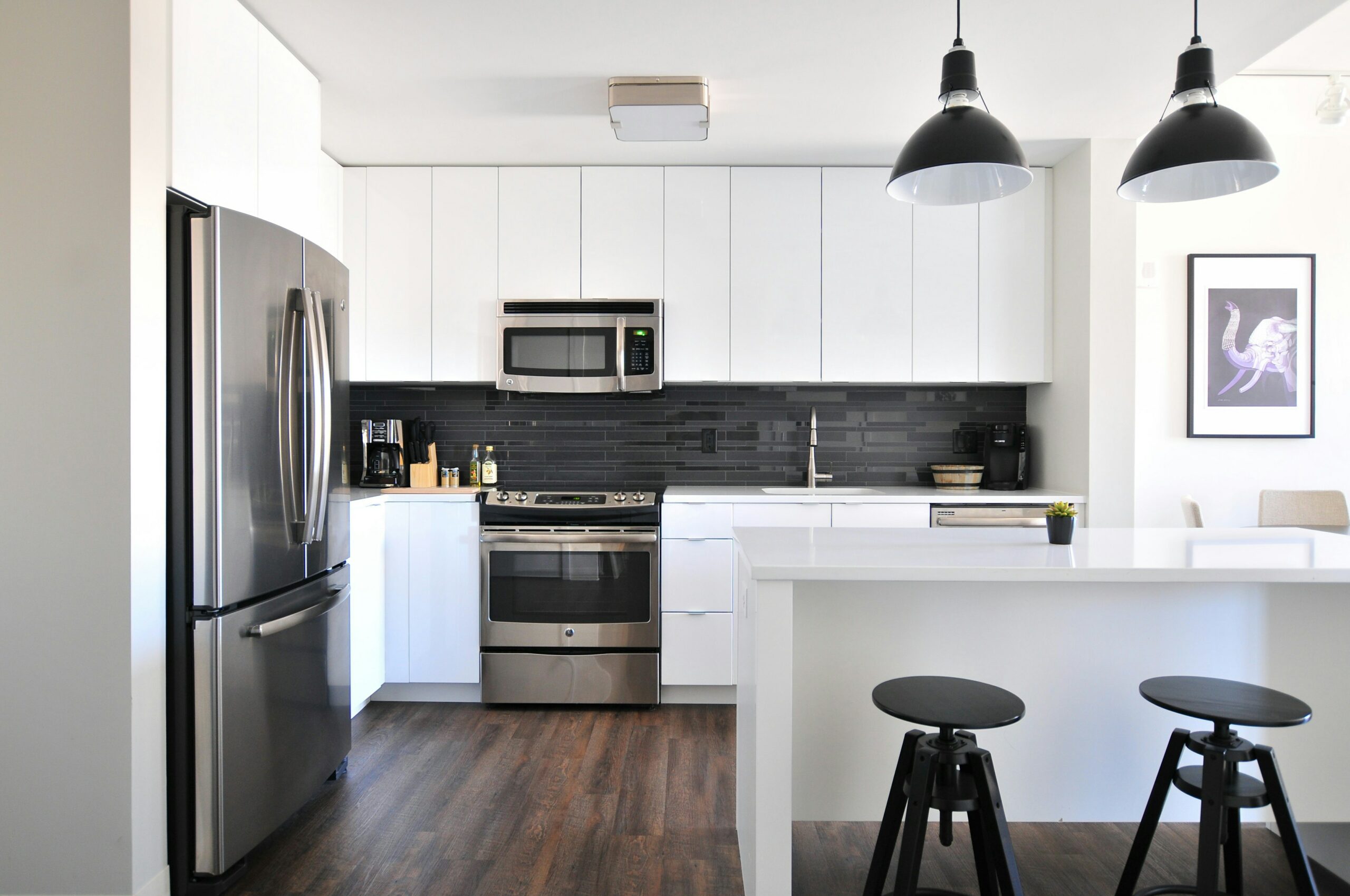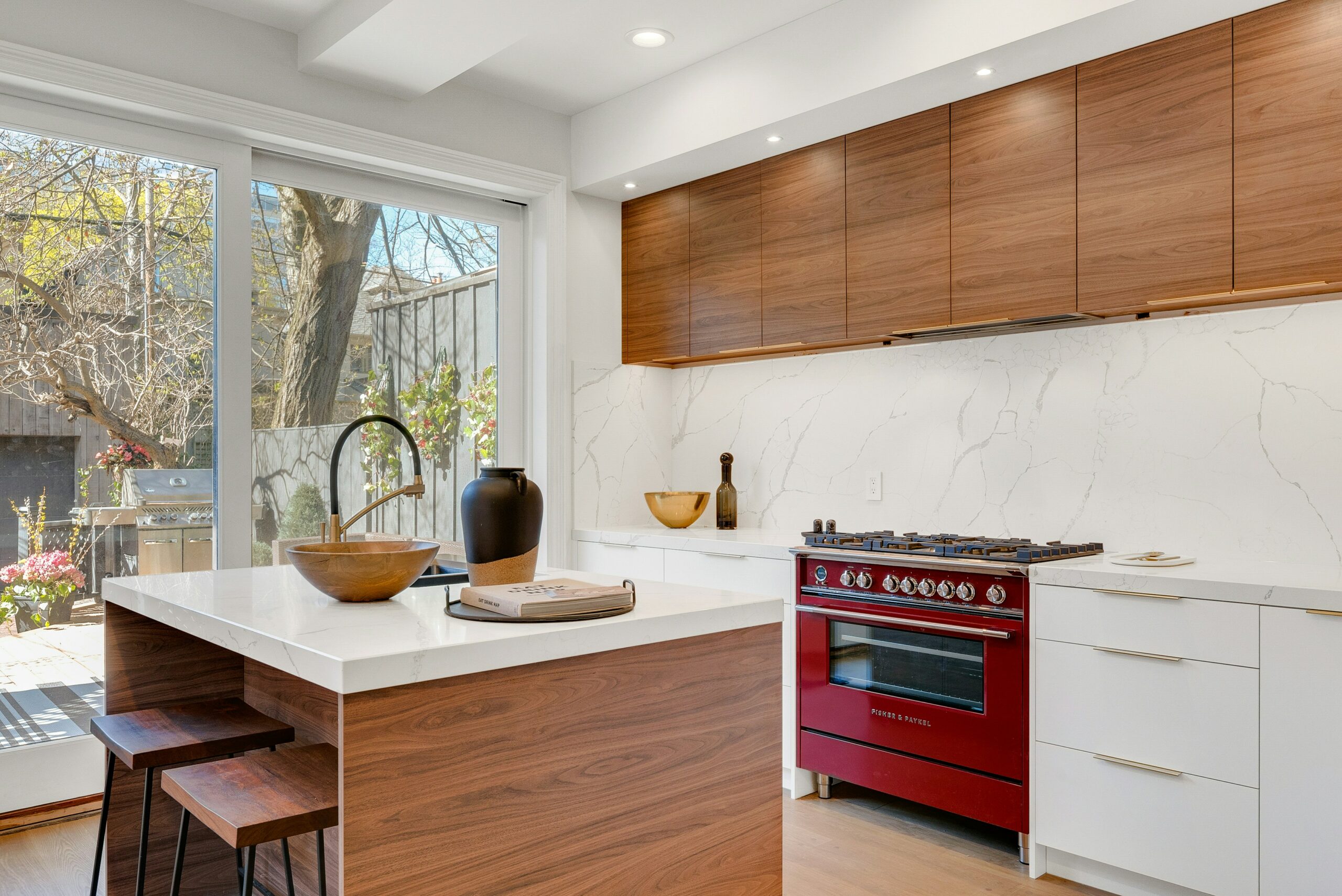Discover the secrets of how to cut laminate countertop effortlessly and accurately. Embarking on a DIY project involving laminate countertops can be a daunting task, especially when it comes to achieving those clean, precise cuts without damaging the surface. But once you grasp some fundamental basics, owning the right tools, and following a meticulous, step-by-step guide, the task can become both manageable and rewarding.
In the following sections, you’ll get a deep dive into concepts essential for this process such as understanding the basics of cutting laminate countertops, identifying the necessary tools, the safety measures needed, and detailed guides on how to measure and cut your countertop effectively. Also, we’ll shed light on some common mistakes and provide expert tips to give your work a professional finish. Furthermore, we’ll share some swift solutions to troubleshoot any errors that you might experience during the process.
Interestingly, we’ll also talk about the importance of maintaining your laminate countertop post cutting, and conclude with insights on the multiple benefits learning how to cut a laminate countertop yourself can bring. Whether you’re renovating on a budget, or just enjoy the satisfaction of improving your own home, this guide is a perfect resource and partner in your quest for a well-executed DIY project.

Understanding the Basics of Cutting Laminate Countertops
When it comes to cutting laminate countertops, it’s important to have a solid understanding of the basics. This knowledge will not only ensure that you achieve precise and clean cuts, but also help you avoid costly mistakes. In this section, we will cover the fundamental concepts and techniques involved in cutting laminate countertops.
Materials and Tools
Before you begin cutting laminate countertops, it’s essential to gather the necessary materials and tools. These include:
-
- Laminate countertop
-
- Measuring tape
-
- Straightedge or ruler
-
- Utility knife
-
- Jigsaw
-
- Router
-
- Sanding block
Understanding the Laminate
Before you start cutting, it’s important to understand the structure of laminate countertops. Laminate consists of multiple layers, including a decorative layer, a core layer, and a backing layer. The decorative layer is what gives laminate its appearance, while the core layer provides strength and stability. The backing layer helps to protect the countertop from moisture.
Measuring and Marking
Precision is key when cutting laminate countertops, so taking accurate measurements and marking the cut lines is crucial. Use a measuring tape to measure the dimensions of the countertop and mark the cut lines with a pencil or marker. Double-check your measurements before proceeding to ensure accuracy.
Choosing the Right Cutting Tool
There are several cutting tools that can be used to cut laminate countertops, including a jigsaw, circular saw, or router. The choice of tool depends on the type of cut you need to make and your personal preference. It’s important to use a sharp blade or bit to ensure clean and smooth cuts.
Executing the Cut
Once you have measured, marked, and chosen the right cutting tool, it’s time to execute the cut. Follow the manufacturer’s instructions for your chosen tool and make sure to wear appropriate safety gear, such as goggles and gloves. Take your time and make slow, steady cuts to avoid splintering or chipping the laminate.
By understanding the basics of cutting laminate countertops, you’ll be able to confidently tackle your next DIY project. Remember to always prioritize safety and accuracy, and don’t hesitate to seek professional help if you’re unsure or uncomfortable with any step of the process.

The Essentials Tools Needed for Cutting Laminate Countertops
When it comes to cutting laminate countertops, having the right tools is essential for achieving clean and precise cuts. Here are the essential tools you’ll need:
-
- Jigsaw: A jigsaw is a versatile tool that can be used to make straight and curved cuts in laminate countertops. Look for a jigsaw with a fine-toothed blade designed for cutting laminate.
-
- Circular Saw: A circular saw with a carbide-tipped blade is another tool that can be used to cut laminate countertops. It’s important to use a saw with a guide rail or straight edge to ensure straight cuts.
-
- Router: A router with a laminate trimming bit is useful for finishing the edges of the countertop and creating a smooth, professional-looking finish.
-
- Clamps: Clamps are essential for securing the countertop in place during the cutting process. They help prevent the laminate from chipping or splintering.
-
- Measuring Tape: Accurate measurements are crucial when cutting laminate countertops. A measuring tape will help you measure and mark the countertop before making any cuts.
-
- Safety Glasses and Gloves: Safety should always be a priority when working with power tools. Wear safety glasses to protect your eyes from flying debris and gloves to protect your hands.
-
- Masking Tape: Masking tape can be used to create a guide line on the countertop, ensuring straight cuts and preventing the laminate from chipping.
-
- Sanding Block: A sanding block is useful for smoothing rough edges and removing any imperfections after cutting the laminate countertop.
Having these essential tools on hand will make the process of cutting laminate countertops much easier and ensure professional-looking results. Remember to always follow safety guidelines and take your time to achieve accurate cuts.

Safety Measures in Cutting Laminate Countertops
When it comes to cutting laminate countertops, safety should always be a top priority. The process involves using sharp tools and working with potentially hazardous materials, so it’s essential to take the necessary precautions to protect yourself and others. Here are some safety measures to keep in mind:
1. Wear Protective Gear
Before you start cutting laminate countertops, make sure to wear the appropriate protective gear. This includes safety glasses or goggles to protect your eyes from flying debris, gloves to protect your hands from sharp edges and cuts, and a dust mask to prevent inhalation of dust particles.
2. Use the Right Tools
Using the right tools for cutting laminate countertops is crucial for both safety and achieving accurate cuts. Make sure you have a sharp utility knife or laminate cutter specifically designed for this purpose. Avoid using dull or damaged tools as they can slip and cause accidents.
3. Secure the Countertop
Before you start cutting, ensure that the laminate countertop is securely positioned and stable. Use clamps or other securing methods to prevent it from shifting or moving during the cutting process. This will help you maintain control and reduce the risk of accidents.
4. Work in a Well-Ventilated Area
Cutting laminate countertops can produce dust and fumes that may be harmful if inhaled in large quantities. It’s important to work in a well-ventilated area to minimize exposure. Open windows or use fans to improve air circulation and wear a dust mask to further protect yourself.
5. Take Breaks and Stay Focused
Working with sharp tools requires concentration and focus. Take regular breaks to rest and refocus your attention. Fatigue or distractions can increase the risk of accidents. Remember to always prioritize your safety and take your time to ensure accurate and precise cuts.
6. Clean Up Properly
After cutting laminate countertops, clean up the work area thoroughly. Remove any debris, dust, or sharp objects to prevent accidents or injuries. Dispose of waste materials properly and store your tools in a safe and organized manner.
By following these safety measures, you can minimize the risk of accidents and injuries while cutting laminate countertops. Remember, safety should always be your top priority to ensure a successful and hazard-free project.

Step-by-Step Guide on How to Cut Laminate Countertops
When it comes to cutting laminate countertops, it’s important to follow a step-by-step guide to ensure accurate and precise cuts. Here is a detailed guide on how to cut laminate countertops:
1. Measure and Mark
The first step is to measure the area where the countertop will be installed. Use a measuring tape to determine the dimensions and mark the measurements on the laminate countertop.
2. Prepare the Tools
Before cutting, make sure you have the essential tools needed for cutting laminate countertops. These include a circular saw with a fine-toothed blade, a jigsaw, a straightedge, clamps, a file, and safety equipment like goggles and gloves.
3. Secure the Countertop
Place the laminate countertop on a stable work surface and secure it with clamps to prevent it from moving during the cutting process.
4. Make the Initial Cut
Using a circular saw with a fine-toothed blade, carefully make the initial cut along the marked line. Take your time and ensure a smooth and straight cut.
5. Cut the Remaining Sections
After the initial cut, use a jigsaw to cut the remaining sections of the laminate countertop. Follow the marked lines and use a steady hand to maintain accuracy.
6. Smooth the Edges
Once all the cuts are made, use a file to smooth the edges of the laminate countertop. This will ensure a clean and professional finish.
7. Clean and Install
After cutting and smoothing the edges, clean the laminate countertop to remove any debris or dust. Then, proceed with the installation process according to the manufacturer’s instructions.
By following this step-by-step guide, you can successfully cut laminate countertops and achieve the desired results. Remember to prioritize safety and take your time to ensure accurate cuts.

How to Measure Before Cutting Laminate Countertops
Before you start cutting your laminate countertops, it’s crucial to take accurate measurements. This step is essential to ensure that your countertops fit perfectly in your space and minimize any mistakes or wasted materials. Here’s a step-by-step guide on how to measure before cutting laminate countertops:
1. Gather the necessary tools
Before you begin measuring, make sure you have the right tools on hand. You’ll need a measuring tape, a straightedge, a pencil, and a notepad to jot down your measurements.
2. Clear the countertop area
Remove any objects or appliances from the countertop area to ensure an unobstructed measuring process. This will help you get accurate measurements and avoid any potential errors.
3. Measure the length
Using your measuring tape, start at one end of the countertop and measure the length. Make sure to measure from one edge to the opposite edge, taking into account any overhangs or gaps you want to include.
4. Measure the width
Next, measure the width of the countertop. Place your measuring tape at one end and extend it to the other end, ensuring that it’s parallel to the length measurement you took earlier.
5. Measure any cutouts or openings
If your countertop has any cutouts for sinks, cooktops, or other appliances, you’ll need to measure these as well. Use your measuring tape to determine the dimensions of these cutouts accurately.
6. Double-check your measurements
After taking all the necessary measurements, it’s essential to double-check your work. Make sure all the measurements are accurate and consistent with your design plans.
7. Record your measurements
Write down your measurements on a notepad or take a picture of them for easy reference later on. Having accurate measurements on hand will make the cutting process smoother and more efficient.
By following these steps to measure before cutting laminate countertops, you’ll ensure a precise and accurate fit for your project. Taking the time to measure correctly will save you time, money, and frustration in the long run.

Common Mistakes When Cutting Laminate Countertops
When it comes to cutting laminate countertops, there are several common mistakes that people often make. These mistakes can lead to uneven cuts, damaged edges, and overall poor results. To ensure that your laminate countertop cutting project goes smoothly, it’s important to be aware of these mistakes and take steps to avoid them.
1. Not Using the Right Blade
One of the most common mistakes when cutting laminate countertops is not using the right blade. Laminate is a tough material, and using a blade that is not specifically designed for cutting laminate can result in chipping, splintering, or even breaking the countertop. It’s essential to use a fine-toothed blade specifically designed for laminate cutting to ensure clean and precise cuts.
2. Cutting Too Fast
Another mistake that people often make is cutting too fast. Laminate countertops require a slow and steady cutting motion to prevent chipping and ensure a smooth cut. Rushing through the cutting process can lead to uneven edges and a less than perfect finish. Take your time and make sure to maintain a steady pace when cutting laminate countertops.
3. Neglecting to Support the Countertop
When cutting laminate countertops, it’s crucial to provide proper support to prevent the countertop from sagging or breaking. Failing to support the countertop adequately can result in uneven cuts and damage to the material. Use sawhorses or other sturdy supports to ensure that the countertop remains stable and secure during the cutting process.
4. Not Using a Straight Edge Guide
A common mistake is not using a straight edge guide when cutting laminate countertops. A straight edge guide helps to ensure straight and accurate cuts by providing a guide for the saw blade. Without a straight edge guide, it’s easy for the saw to wander off course, resulting in crooked cuts and an uneven countertop edge. Always use a straight edge guide to maintain precision in your cuts.
5. Lack of Proper Measurement
Another mistake that can lead to problems when cutting laminate countertops is a lack of proper measurement. Failing to measure accurately can result in cuts that are too short or too long, leaving gaps or overhangs that are difficult to fix. Always double-check your measurements before making any cuts to ensure a precise fit.
6. Ignoring Safety Precautions
Safety should always be a top priority when cutting laminate countertops. Ignoring safety precautions can lead to accidents and injuries. Always wear protective gear, such as safety glasses and gloves, and follow the manufacturer’s instructions for operating the cutting tools. Taking the necessary safety measures will help prevent accidents and ensure a smooth and successful cutting process.
Avoiding these common mistakes when cutting laminate countertops will help you achieve professional-looking results and avoid unnecessary damage or errors. By using the right tools, taking your time, providing proper support, using a straight edge guide, measuring accurately, and prioritizing safety, you can ensure a successful laminate countertop cutting project.

Expert Tips for Smoother Cuts on Laminate Countertops
When it comes to cutting laminate countertops, there are a few expert tips that can help you achieve smoother cuts and avoid common mistakes. By following these tips, you can ensure that your laminate countertops are cut accurately and look professional.
1. Use a Sharp Blade
One of the most important tips for cutting laminate countertops is to use a sharp blade. A dull blade can cause the laminate to chip or tear, resulting in an uneven cut. Make sure to replace your blade regularly to ensure clean and smooth cuts.
2. Take Your Time
While it may be tempting to rush through the cutting process, taking your time is crucial for achieving smoother cuts. Make sure to measure and mark your cuts accurately, and use slow and steady movements when cutting. This will help prevent mistakes and ensure a clean cut.
3. Use Support
When cutting laminate countertops, it’s important to provide support to prevent the laminate from chipping or cracking. You can use a piece of scrap wood or a support block underneath the laminate to provide stability and reduce the risk of damage.
4. Secure the Countertop
Before cutting the laminate countertop, make sure it is securely fastened to a stable surface. This will prevent any movement or shifting during the cutting process, resulting in cleaner and more accurate cuts.
5. Use a Fine-Toothed Saw Blade
Using a fine-toothed saw blade can help you achieve smoother cuts on laminate countertops. The fine teeth on the blade will reduce the risk of chipping and tearing, resulting in a clean and professional-looking cut.
6. Practice on Scrap Pieces
If you’re new to cutting laminate countertops, it’s a good idea to practice on scrap pieces first. This will allow you to get a feel for the cutting process and make any necessary adjustments before working on the actual countertop.
7. Sand the Edges
After cutting the laminate countertop, it’s important to sand the edges to ensure a smooth finish. Use a fine-grit sandpaper to gently sand the edges, removing any roughness or imperfections.
By following these expert tips, you can achieve smoother cuts on laminate countertops and create a professional-looking finish. Remember to always prioritize safety and take your time to ensure accurate and clean cuts.

Fixing Errors in Cutting Laminate Countertops
Even with the best planning and careful execution, errors can sometimes occur when cutting laminate countertops. However, these errors can be fixed with the right techniques and tools. In this section, we will explore some common errors that may arise during the cutting process and how to fix them.
1. Uneven Edges
One of the most common errors when cutting laminate countertops is ending up with uneven edges. This can happen due to a variety of reasons, such as using a dull blade or not applying enough pressure while cutting.
To fix this error, you can use a router with a flush trim bit to even out the edges. Simply run the router along the uneven edge, allowing the trim bit to remove the excess laminate and create a smooth, even edge.
2. Chipping or Splintering
Another common error is chipping or splintering of the laminate surface during the cutting process. This can occur if the blade is not sharp enough or if the cutting speed is too fast.
To fix this error, you can use a fine-toothed file or sandpaper to smooth out the chipped or splintered area. Gently file or sand the affected area until it is smooth and even with the rest of the countertop surface.
3. Incorrect Measurements
Incorrect measurements can lead to errors in cutting laminate countertops, resulting in pieces that are too small or too large for the desired space.
To fix this error, you will need to recut the laminate countertop using the correct measurements. Make sure to double-check your measurements before making any cuts to avoid further errors.
4. Inaccurate Cuts
Inaccurate cuts can occur if the cutting tool is not held steady or if the cutting line is not followed properly. This can result in uneven or crooked cuts.
To fix this error, you can use a straight edge or a guide to help ensure accurate cuts. Place the straight edge or guide along the cutting line and use it as a reference to guide your cutting tool, ensuring a straight and accurate cut.
By following these techniques, you can effectively fix errors that may occur when cutting laminate countertops. Remember to always work carefully and double-check your measurements to minimize the chances of errors in the first place.

Maintaining Your Cut Laminate Countertops
Once you have successfully cut your laminate countertops, it is important to maintain them properly to ensure their longevity and keep them looking their best. Here are some essential tips for maintaining your cut laminate countertops:
Cleaning
Regular cleaning is key to keeping your cut laminate countertops in good condition. Use a mild soap or detergent and warm water to wipe down the surface. Avoid using abrasive cleaners or scrub brushes that can scratch the laminate. Dry the countertops thoroughly to prevent water spots.
Avoiding Heat and Moisture
Laminate countertops are not heat-resistant, so it is important to protect them from hot pans or dishes. Always use trivets or hot pads to place hot items on the surface. Additionally, avoid placing wet or damp items directly on the countertops as prolonged exposure to moisture can cause the laminate to warp or swell.
Preventing Scratches
To prevent scratches on your cut laminate countertops, use cutting boards or chopping mats when preparing food. Avoid dragging heavy or sharp objects across the surface. If you do notice any scratches, you can use a laminate repair kit to fill them in and restore the appearance of the countertop.
Avoiding Chemical Damage
Harsh chemicals can damage the laminate surface, so it is important to avoid using them on your countertops. This includes bleach, abrasive cleaners, and solvents. Instead, opt for mild cleaning solutions and avoid any products that contain ammonia or vinegar.
Regular Inspections
Periodically inspect your cut laminate countertops for any signs of damage or wear. Look for any loose edges or seams that may need to be repaired. If you notice any issues, it is best to address them promptly to prevent further damage.
Proper Use and Care
Lastly, it is important to use your cut laminate countertops properly and with care. Avoid standing or sitting on the countertops, as this can cause them to crack or break. Be mindful of any heavy objects that may be placed on the surface and distribute the weight evenly to prevent damage.
By following these maintenance tips, you can keep your cut laminate countertops looking beautiful and extend their lifespan. Proper cleaning, avoiding heat and moisture, preventing scratches, avoiding chemical damage, regular inspections, and proper use and care are all key to maintaining your cut laminate countertops.

Benefits of Learning How to Cut Laminate Countertops Yourself
When it comes to home improvement projects, cutting laminate countertops can be a daunting task. However, learning how to cut laminate countertops yourself can offer several benefits:
1. Cost Savings
By cutting laminate countertops yourself, you can save a significant amount of money. Hiring a professional to do the job can be expensive, but with the right tools and knowledge, you can achieve professional-looking results without breaking the bank.
2. Customization
When you cut laminate countertops yourself, you have the freedom to customize them according to your specific needs and preferences. Whether you want a unique shape or size, learning how to cut laminate countertops allows you to create a countertop that fits perfectly in your space.
3. Flexibility
Having the skills to cut laminate countertops gives you the flexibility to make changes or repairs as needed. If you decide to remodel your kitchen or bathroom in the future, you can easily modify your existing countertop without having to rely on a professional.
4. Sense of Accomplishment
Completing a DIY project like cutting laminate countertops can give you a great sense of accomplishment. Seeing the finished result and knowing that you did it yourself can boost your confidence and inspire you to take on more home improvement projects in the future.
5. Learning Experience
Learning how to cut laminate countertops is a valuable skill that can be applied to other areas of home improvement. It allows you to gain knowledge and experience in working with different materials, tools, and techniques, which can be useful for future projects.
Overall, learning how to cut laminate countertops yourself offers cost savings, customization options, flexibility, a sense of accomplishment, and a valuable learning experience. With the right tools, safety measures, and step-by-step guidance, you can successfully cut laminate countertops and enhance the beauty and functionality of your home.



